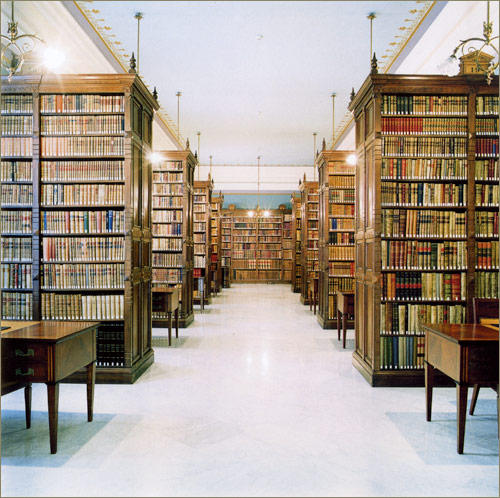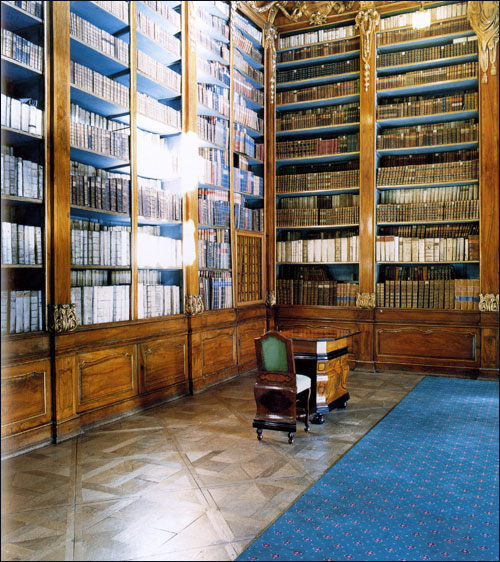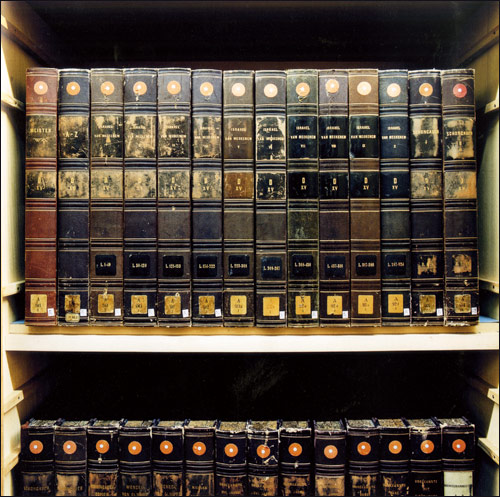
Ruth Fremson/The New York Times
A CITY RITUAL Austin Ferrier, on his way to work, reads Graham Greene’s “The Quiet American” on the B train.
ByALEXIS MAINLAND
Published: September 3, 2009
THE middle-aged woman with the black cardigan around her shoulders had assumed a meticulously calibrated posture: feet shoulder-width apart, arms slightly bent, fists loosely clenched, muscles relaxed yet alert.
She was not preparing for a tae kwon do bout, but performing her personal version of the underground battle engaged in daily by millions of New Yorkers: reading, intently, on a sardine-can D train hurtling swiftly toward Brooklyn in the evening rush. Without holding on.
“I am a New Yorker,” the woman, Robin Kornhaber, 54, told me as if those five crisp words explained everything. “I can do anything on the subway.”
Reading on the subway is a New York ritual, for the masters of the intricately folded newspaper like Ms. Kornhaber, who lives in Park Slope and works on the Upper East Side, as well as for teenage girls thumbing through magazines, aspiring actors memorizing lines, office workers devouring self-help inspiration, immigrants newly minted — or not — taking comfort in paragraphs in a familiar tongue. These days, among the tattered covers may be the occasional Kindle, but since most trains are still devoid of Internet access and cellphone reception, the subway ride remains a rare low-tech interlude in a city of inveterate multitasking workaholics. And so, we read.
Even without a seat, even while pressed with strangers into human panini, even as someone plays a keyboard harmonica and rattles a cup of change, even when stumbling home after a party.
There are those whose commutes are carefully timed to the length of a Talk of the Town section of The New Yorker, those who methodically page their way through the classics, and those who always carry a second trash novel in case they unexpectedly make it to the end of the first on a glacial F train. There is a lawyer from Brooklyn who for the past two months has catalogued what she and other commuters are reading on a blog, “The Subway Book Club,” and a student at the New School who spent the summer passing out 600 donated books to subway riders to spread her passion for reading.
And then there are those reading the readers, imagining their story lines. That man in a suit studying “Rosetta Stone Level 3 Italian” on the No. 2 train must be preparing to meet his fiancée’s family in Tuscany. The woman reading a young-adult novel at 81st Street is probably a teacher preparing for class. We are usually left to wonder, but I recently spent 12 hours crisscrossing four boroughs underground, asking people what they were reading and why.
Bob Alderson, 46, the man learning Italian, is a patent lawyer, with no imminent overseas travel plans, but aspirations. “Someday I want to visit Italy, so I’m studying,” he said.
And the woman reading “City of Glass,” an urban fantasy involving a slavering demon and several warlocks? Kimberly Nessel, 26, a dog walker with a graduate degree in forensic psychology, said she became addicted to young-adult fiction with dark plot lines when she worked in a bookstore.
JUST BROWSING
C train at 135th Street, 9:30 a.m.
The blue bag balanced on her lap was packed full of health care administration textbooks and homework, but Deborah Hairston, who works in the cancer unit at NewYork-Presbyterian/Columbia hospital was using her commute to peruse the catalogs that stuff her mailbox each week.
“Sometimes I find things I want to buy, but most of the time I am just browsing,” she said, paging past a display of bead-embellished Chadwicks cardigans. “I don’t want to read the news or get involved with anything too heavy. I have enough of that in my life.”
A PAGE A DAY
B train at 96th Street, 10 a.m.
To learn the Talmud, many of its students read one of its 2,711 pages each day. And it helps to have a chevruta, or study partner. Harry and David Zinstein, brothers from Washington Heights, generally conduct their Daf Yomi — page of the day, in Hebrew — study sessions en route to work on the Upper West Side.
Except on Wednesday, which turns out to be a kind of day of rest for Harry, the elder of the two Zinsteins at 28. A manager at Mike’s Bistro, a kosher restaurant on West 72nd Street, Harry Zinstein forgoes his subway Talmud study those days to read the Dining section of The New York Times.
“It’s the only thing I read on the train except for the Talmud,” he said, his thick, leather-bound Babylonian text tucked inside his messenger bag for later consumption. “And it’s the perfect length for the commute.”
David Zinstein, 19, who is studying in Israel but spent the summer working for his brother, sat to the right, reading his Aramaic tractates (with English translations). “I always read the Talmud on the subway,” he said. “Even on Wednesdays.”
MULTITASKING
A train at 23rd Street, 12:30 p.m.
Donalay Thomas is the kind of reader who creates a private space for herself among the multitudes, whether she is squashed by the door or has a whole row of seats to herself. With her iPod earbuds firmly in place (“On the Ocean,” from an R & B album by K’Jon) and a thick hardcover (“Resurrecting Midnight,” by Eric Jerome Dickey) open on her lap, Ms. Thomas, head down, can zone out and leave the world behind.
“I always listen to music while I read on the train because it sets the mood for me to get lost in the author’s plots,” said Ms. Thomas, 21, a model in between jobs who lives in Englewood, N.J., and was headed to West Fourth Street for an afternoon of skateboarding. “I can become one of the characters that I’m reading about.”
She does not, however, get so lost in her books that she loses touch with fellow passengers. “I’ll ask other readers if they’re enjoying a book I’m familiar with,” Ms. Thomas said.
Then she turned to a woman across the aisle. “Your stop is next,” she said, proving that she had been paying a little bit of attention to everything all along.
SUBWAY AS STAGE
B train at 42nd Street, 1:30 p.m.
If every restaurant in New York employs at least one actor, then every subway car seems to carry at least two — rehearsing for a part, or just daydreaming about one.
An actress named Rachel, who is 25 and wore dark sunglasses that may or may not have been helping her get into character, was in from Los Angeles, with several auditions lined up, including one for the part of Sosa in “The A-Team,” a movie remake of the 1980s television series. “Sosa is an aide to the secretary of defense,” she explained. “I am trying to channel her. She is sexy, but official.”
Across the aisle, James Wright, 31, was dressed casually, sitting beneath a dark suit and starched white shirt on a hanger. On his way to an audition for a soap opera, “As the World Turns,” he was reading Arthur Miller’s “Death of a Salesman” — he aspires to play Biff some day — to warm up.
A few minutes later, another actress, Angelica Ayala, was gesticulating forcefully and mouthing the words to her part, a woman with multiple names and personalities. Ms. Ayala, 45, made no apologies for her theatrical display.
“I just have to do what I have to do,” she said. “People might stare, but I need to rehearse.” Her play, “Peccatoribus,” was being staged at the Pregones Theater in the Bronx.
“It’s a play about war and fighting for yourself,” she said.
WRITING, TO READ LATER
N train at 59th Street, 4 p.m.
Having finished “The Nimrod Flipout,” a book of short stories by the Israeli writer Etgar Keret, on her morning commute, Alysia Vallas, on her way home to the Upper West Side, pulled out the journal in which she had been recording a summer’s worth of impressions of New York.
“I generally write little vignettes about daily occurrences I’d like to remember,” she said. “Strange places I’ve visited, people who have caught my eye on the subway, things of that nature.”
The journal, a patterned hardcover, also includes carefully drawn tables and notes on guitar chords she researched at the New York Public Library.
Ms. Vallas, 21 and a student at Grinnell College in Iowa, spent the summer as an intern at the Queens Library HealthLink. She said she typically used her train time to read or write.
“It’s the one the time of day that you have completely to yourself with no sort of immediate obligations, unplugged,” she said. “Although you’re surrounded by people, the anonymity is really forgiving.”
READERS IN TRAINING
2 train at 42nd Street, 5 p.m.
The day-campers from Tremont United Methodist Church in the Bronx, ages 5 to 8, were exhausted. They had been going full speed with activities since 7:30 a.m., including a field trip to the New York Hall of Science in Queens.
Waiting on the platform at Times Square, the children plotted how to score a coveted rush-hour seat, planning who would sit on whose lap if the options were scarce. Hands were held tight, and two of the youngest girls rested their heads against each other’s for a moment.
As the train pulled into 42nd Street, Jesus Figueroa, a Tremont counselor for six summers, readied the campers to board: “Get your books ready.” An explosion of titles — “Jig and Mag,” “A Rose, a Bridge, and a Wild Black Horse,” “The Kid Who Invented the Popsicle” — were pulled from backpacks.
According to a church rule, Tremont campers must read whenever they win a seat on the subway. Each day, campers select a book from the church library or bring one from home. They practice reading in short increments — 20 minutes here and there — and keep reading journals to document their progress.
“The books keep them occupied while they ride and help them stay on point with their reading skills,” said Mr. Figueroa, 20.
On the train, even campers who had to stand took to their books. An 8-year-old named Christopher used both hands to hold “Time Together,” supporting himself by twisting one of his black Nike Shox around the pole behind him. Next to him was Steven, also 8, who cracked open “50 Simple Things Kids Can Do to Save the Earth” with one hand and held on to a counselor with the other.
With an index finger following the words on Page 4 of “Mary Anne to the Rescue,” a book in the Baby-Sitters Club series, 8-year-old Laronda perched intently on her seat between two men scanning newspapers. For a moment, she looked up to offer an assessment of the task at hand. “This is a lot of work,” she said, “but it’s fun.” And then she turned back to the book.
JOINING THE CLUB
D train at Grand Street, 5:45 p.m.
Fellow passengers would probably never suspect that Carlton Clarke, standing in the middle of a crowded car, was consumed with the ramblings of a disaffected teenager.
With a logo bag from the accounting firm where he works slung over his shoulder and a stack of papers bound by a black clip balanced on his left palm, Mr. Clarke appeared to be taking his work home with him to Brooklyn.
But he was, in fact, three chapters into J. D. Salinger’s “Catcher in the Rye,” a copy of which he had printed from a downloaded version circulating around his office book club, which meets weekly and turns 50-somethings like Mr. Clarke into armchair literary critics.
“I’m only part of the way into this book, but I already have questions about where it could be going and whether or not it can get there,” he said, bracing himself as the train lurched across the Manhattan Bridge.
In recent months, the book group has read the first and second installments in Art Spiegelman’s “Maus” series. “That was a different kind of reading experience because they are graphic novels,” Mr. Clarke said. “I had never been exposed to that genre before.”
As for “Catcher in the Rye,” Mr. Clarke could not remember whether he had read it before. “Maybe I did, in school, but either way, this is different,” he said. “I definitely never read it on the subway before.”
MEDITATION IN MOTION
7 train at Queensboro Plaza, 6:15 p.m.
On a crowded car hurtling toward Jackson Heights, Panee Ma was immersed in a solitary pursuit, radiating monklike calm.
For two years, Ms. Ma has used her round trips from Queens to the garment district, where she spends long days applying intricate beading to clothing by hand, to read “The Wisdom of the Lotus Sutra,” a six-volume Buddhist literary masterpiece. And here she was, on a warm Wednesday evening, most of the way through her last book.
Ms. Ma, 68, a native of Korea who came to New York in 1981 via Thailand, speaks in heavily accented English. Her reading goal is simple: “I am learning through these books to become a better human being and get better at English.
“I try to improve myself every day,” she added, thoughtful about the necessity of combining her spiritual life with the grime and noise of the subway. “I am trying to learn to live life as a Buddha. I don’t want to waste any time.”
An earlier version of this article misidentified the state in which Grinnell College is located and misstated part of the title of the Eric Jerome Dickey book being read by Donalay Thomas.















